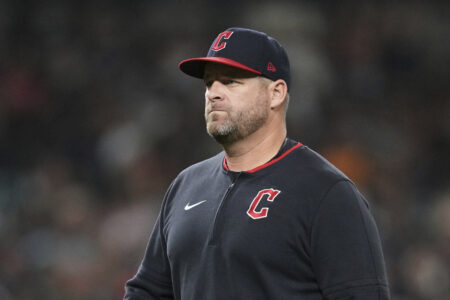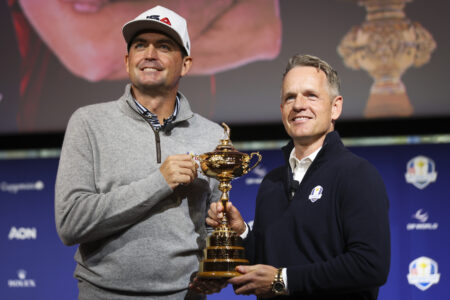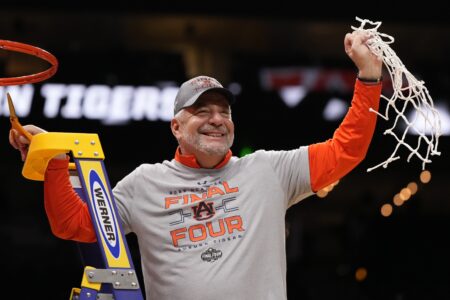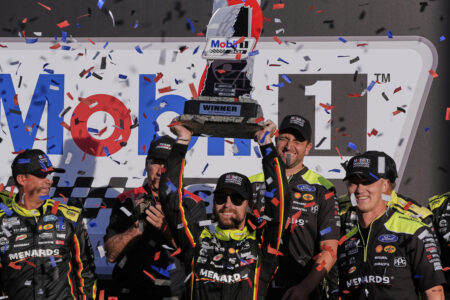F1 Review: Ferrari melts in Hungary’s cool temps
As Formula 1 (F1) drivers prepared for the first practice session in Budapest, Hungary, two drivers gave their seats to rookies. Each driver, over the course of the season, must give at least two practice sessions over to a rookie driver but the teams can choose when that happens. Nico Hulkenberg, with Kick Sauber, gave his seat to Paul Aron as planned. Fernando Alonso, with Aston Martin, was suffering muscle issues (particularly in his neck after a strenuous race in Spa last week), so Felipe Drugovich was called up to take his seat for the first practice session.
Drugovich is the reserve driver for Aston Martin, so he travels with the team most of the race weekends anyway, but it was still late notice for him to take over. As a former F2 (one of the feeder series for F1), Drugovich has bided his time with Aston Martin, hoping a full-time drive will come his way before too long. Despite finishing 16th out of 20 drivers in the practice session, Drugovich spoke highly of the Aston Martin. Alonso returned in the afternoon for the second practice session and was able to race.
During the third free practice session, Drugovich talked with F1 correspondents about the nature of the track in Hungary, one that many people call “Monaco without the walls.” The reason why is that there are a multitude of tight corners in the track and cars will typically run very high downforce on their cars in order to drive faster in the corners.
Here is what he said.
“Most of the teams are running Monaco downforce, which is like maximum downforce. You get to drive with the softer tires and the highest downforce, so the maximum grip you can get so, yeah, it is really, really fast. It actually feels slow, a little bit, in the straights. You have so much drag, because of so much downforce, and it is actually quite counterintuitive. Sometimes you think you’re going to be super quick in one corner, you get out of the corner, you feel slow on the straights because the speed doesn’t grow any more.”
I’ve struggled to convey how downforce changes the dynamic of racing, but thought Drugovich’s comments were very enlightening. Cars are able to go quickly through the corners with a lot of extra grip, but then when they get to the straight-line parts of the track where they would normally hit their highest speeds, they don’t feel that same acceleration because the drag slows the car down on that part.
Striking a balance between high downforce for the corners and lower downforce for the straights is the fine line drivers try to work out during the practice sessions. One of the problems many teams face with high downforce cars is that they wear through their tires faster. McLaren has been one of the best at taking care of their tires, particularly the rear ones, which is part of the advantage they’ve had over the other teams throughout this year.
That tire benefit was clear in Hungary as McLaren topped the first practice session by 0.217 seconds, the second and third practice sessions by 0.399 seconds, the first round of qualifying by 0.376 seconds, and the second round of qualifying by 0.239 seconds. What happened in the final round of qualifying was shocking, however, as Charles Leclerc, out of nowhere, put his Ferrari on pole by a meager 0.026 seconds.
While this was Leclerc’s 27th pole position in his career, it was the first for Ferrari this season (outside of Lewis Hamilton’s pole position in the sprint race in China). Most everyone was expecting this to be a runaway weekend for McLaren, but suddenly they were in second and third on the grid, and fared even worse as the race started. Oscar Piastri, starting in second in his McLaren, was able to keep second place, but couldn’t make any inroads on Leclerc’s lead. Lando Norris, Piastri’s McLaren teammate, started in third, but fell back to fifth behind George Russell’s Mercedes and Alonso’s Aston Martin.
Ferrari was riding high with Leclerc leading the race, keeping the McLaren behind. When McLaren decided to pit Piastri relatively early to go to the hard tires and try to undercut Leclerc, Ferrari reacted immediately and brought Leclerc in the next lap to switch tires and cover off the charging Piastri. Russell stayed on the traditional pitstop rotation with Piastri and Leclerc meaning they’d all need a second pitstop before the race was done.
With all three drivers in front pitting, McLaren asked Norris if he wanted to try a one stop race. Conventional thinking was a one stop wouldn’t work because the medium tires the front running drivers started on shouldn’t last thirty plus laps out of the seventy scheduled. Over the radio, Norris gave a less than confident, “Yeah, why not?”
Leclerc was able to hold Piastri behind after the first pitstop, but Norris doing one less pitstop thrust him back into the conversation for a potential race win. There was no question of doing a one stop race for Leclerc as his tires were degrading quickly, and he came in for a second pitstop.
Piastri needed to follow suit soon after, not thinking he could manage his tires to the end. He came out of his second pitstop behind Leclerc once more, but was able to catch up to the Ferrari driver quite quickly. The pace Leclerc had throughout the first half of the race became nonexistent all of a sudden. Unable to do anything about Leclerc for so long, Piastri caught the Ferrari and passed him without issue in one of the DRS zones on the track.
That meant the only car between Piastri and his ninth career win was his teammate and championship rival Norris. Meanwhile, Leclerc, now in third place, was frustratedly berating his team over the radio. Typically, you can hear the anger and/or disappointment from Leclerc bubbling under the surface, but he’ll tell his team they will talk after the race. This time, he was airing it for the world to hear.
Soon enough, Russell and his Mercedes were behind Leclerc. While obviously faster, Russell had trouble finding a way by as Leclerc slithered around the track. As a driver starts braking to enter a corner, they’re not supposed to deviate from that line so that a car attempting to pass knows where there will be room. Leclerc was just all over the place, frustratedly trying to keep Russell behind. A potential race win was off the table for the Ferrari driver, and now his podium was at risk.
Eventually, Russell found a way past. Leclerc was given a five second time penalty for driving erratically, something he deserved, but he had a huge buffer to the fifth place Alonso and didn’t really care. He continued his scathing radio messages to his team.
At the front, Piastri caught up with Norris with about five laps to go, but couldn’t make a move to pass for the win. Norris was able to clench his ninth win of his career and close down the points gap to his teammate to just nine points. The gap between first and second was a mere 0.698 seconds across the line, the closest finish of the season.
To show how dominate the McLaren drivers ended up being, however, the other gaps were telling. There was a twenty-one second gap back to third place Russell, another sixteen seconds back to Leclerc in fourth, and another twenty-two seconds back to fifth place Alonso. While the front two were the closest they’ve been all season, the rest of the field was more strung out than normal.
Every team throughout F1 is now on a mandated two week summer break. No work can be done on cars, no testing, nothing racing related. Piastri, still leading the championship, will probably enjoy the mental break of the stress in such a close championship race with his teammate. Norris will most likely be riding high, finally getting out of his own way and driving a nearly flawless race to victory. The remaining ten races of the season will help one of the two McLaren drivers become the next world champion of F1.
Meanwhile, Ferrari will work on appeasing their two drivers. Leclerc’s meltdown in Hungary is out of character for him, and hopefully the break will help him calm down. Hamilton, a seven-time world champion, has yet to really find any comfort driving the Ferrari. This break should give everyone time to calm down a bit and reset for the end of the season. As a team, they’re still in second place for the constructor’s championship, but Mercedes is lurking within 24 points.
A few notable milestones from this race:
• Max Verstappen drove his 200th race with Red Bull, becoming just the second driver in history to do so. The first was Lewis Hamilton with Mercedes.
• Alpine may be the last place constructor, but they are carrying the highest point total in the history of F1 into the summer break for a last place team.
• McLaren’s win gives them a total of 200, and they are only the second team in F1 history to hit that mark. The first was Ferrari, the only team to race in every season of F1, since 1950.
Cars won’t take to the track again until traveling to the Netherlands with the feature race taking place on Sunday, Aug. 31, at 9 a.m. Eastern Time.




